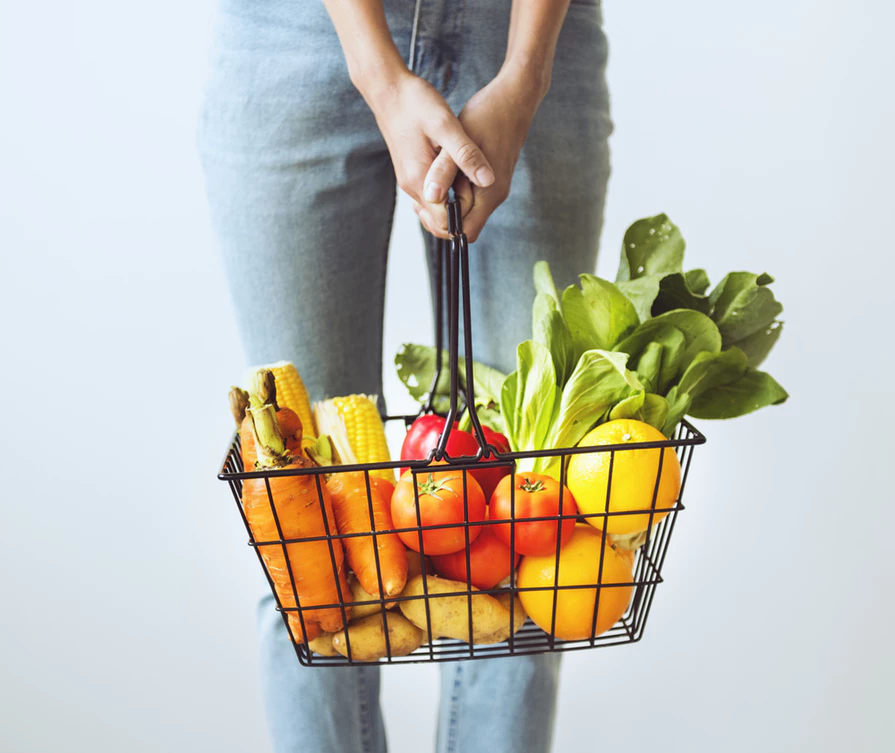When was the last time you had an actual sit-down meal? If your answer is last night, we’re pretty impressed (bonus points if it lasted for more than 15 minutes).
For most people, though, sit-down, food-focused meals tend to take a backseat to busy lifestyles. Instead, meal times become an opportunity to try to do a million things at once. Think eating lunch at your desk to power through a project or getting your Instagram-fix over breakfast.
The problem with this is that when you’re not paying attention to the food you’re eating or the way you’re eating it, you’re more likely to be emotionally driven in your food choices (hey, emotional eating) and eat too much.
This is where mindfulness comes in. The same concepts you bring to a yoga practice can be applied directly to your dinner plate. “Mindful eating can help you listen to the wisdom of the body about what, when, why, and how much to eat,” says Lynn Rossy, Ph.D., author of The Mindfulness-Based Eating Solution and president of The Center for Mindful Eating. “Instead of relying on someone else (or a diet) to tell you how to eat, building a caring relationship with your own body can bring about tremendous understanding and transformation.”
In other words, consciously drawing attention to the complete process of eating—from the farm to your fork—can help you conquer emotional eating, make better food choices, and even experience your meals in a whole new, and hopefully improved, way. Follow these steps to make your next meal a mindful one.
How to Start Eating More Mindfully
Step 1: Eat Before You Shop
We’ve all been there. You head to the store with a gurgling stomach. All of a sudden, you’re wandering the aisles, and the processed energy bars and microwavable meals start looking really tempting. “Shopping when you are too hungry tends to shut us off from our more skillful intentions of how to eat in a way that cares for the body well,” Dr. Rossy says. “We might just reach for the quickest, easiest thing.” If you feel even the slightest grumblings of hunger before you head to the grocery store, whip up a nutritious snack or light meal. That way, when you’re shopping, your food choices will be consciously made, rather than driven by hunger or a sudden blood sugar crash.
Step 2: Make Conscious Food Choices
When you really start to think about where your food comes from, you’re more likely to choose food that’s better for you, the environment, and the people involved in the growing process, explains Meredith Klein, a mindful cooking teacher and the founder of Pranaful. “Pay attention to the source of the food when you’re at the grocery store,” Klein suggests. “Look to see if it is something that was made in this country or abroad and try to be mindful of pesticides the people who were growing the food might have been exposed to or the ones you might be exposing yourself to.” If you can, make regular trips to your neighborhood farmers market, where most of the food is locally grown, she says.
Step 3: Enjoy the Preparation Process
“When you’re preparing the food, instead of looking at it as a chore or something that you have to rush through, really enjoy the process; enjoy chopping the vegetables,” Klein says. “Focus on the process as much as the outcome.”
Step 4: “Just Eat”
As simple as it sounds, “just eating” is something that we rarely do. “People often eat while they are doing other things––looking at their phones, TVs, computers, and books, as well as socializing,” Dr. Rossy says. “While mindful eating can happen when you’re doing [these] other things, try to ‘just eat’ whenever possible.” Focusing on the food you’re eating without distraction can make you aware of flavors that you may never have noticed before, she adds. Yum!
Step 5: Put Down Your Utensils
If you’re having trouble really slowing down the eating process (it can be a lot harder than you think), try physically placing your fork or spoon back on the table after each bite. “That way, you enjoy every bite, and you’re focused on the bite that’s currently in your mouth instead of preparing the next one,” says Klein.
Step 6: Chew, Chew, Chew Your Food
Really chewing your food is pretty important and not just for the purpose of, you know, not choking. “When we chew our food thoroughly, we are helping the body to digest the food easier as well as getting more of our nutritional needs met,” Dr. Rossy says. And no, we’re not going to tell you to count how many times you’ve chewed your food, but Dr. Rossy suggests to chew until the food is well broken-down––which will likely take more than just a few quick chomps.
Step 7: Check in With Your Hunger
When you’re mindlessly eating, like when dinnertime becomes your prime time to catch-up on Netflix shows or when you devour your lunch in a rush, you often miss the signals that your body is sending you during the meal. Namely, the one that tells you when you’re starting to feel full. Dr. Rossy recommends stopping halfway through a meal and taking some time to check in with your hunger levels. “If you are still hungry, continue to eat,” she says. “If you’re not still hungry, save the food for later, compost it, or even throw it away.” Those leftovers can make a great mindful meal for the next day.
In the end, we get it, life doesn’t always allow for sit-down, totally tuned-in mealtimes. So, if you don’t have time for all seven steps, just try incorporating one or two into every meal. “If you only have a little window of time, just try to be dedicated to your food,” Klein says. “Set your phone down, get away from the screen, just really be present––you can do that no matter how much time you have.”
This article was originally published on Nutritious Life.



